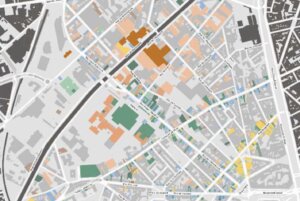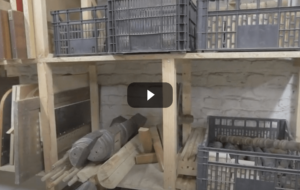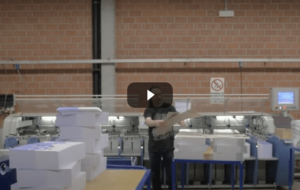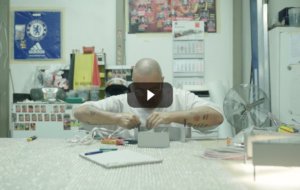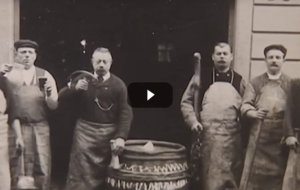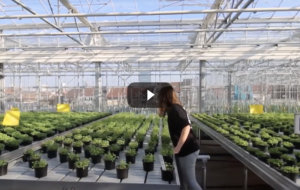
Brussels: four areas for action
Aerial view over Cureghem – one of Brussels’ most dynamic neighbourhoods, home still to numerous makers. ©Diogo Pires.
Despite recent efforts by regional authorities to integrate productive spaces into new development projects in established industrial neighbourhoods, much work is to be done in better understanding how manufacturing can be integrated into the 21st century urban economy. Basic questions such as what types of making are wanted may need to come before thinking about where to put it. Underlining this is the question of skills gaps and linking thinkers and makers. Here are four take-home points from the analysis of Brussels by the CoM team.
1. Giving urban manufacturing a name
One of the biggest challenges for urban manufacturing is to define what it means. Currently a vast range of activities fall into an ‘industrial’ category which can include – transportation, waste management, storage, agriculture, repairs, retail, offices, even film production, in addition to core manufacturing activities such as production of car parts or processing food. This makes it hard to understand what value urban manufacturing provides for the city and why the region should support it. Furthermore it makes it difficult for regional planners to target the needs of specific user-groups, such as manufacturers.
Firstly a rough definition could help guide strategic investment while focus on bringing together partners through partnerships that build on locally available skills and knowledge. Brussels has much to gain from a definition that responds specifically to the landscape of Brussels, the employment conditions, the highly mixed city centre, the compact nature of the city, the link to local universities and particularly to the needs of the local market. However statistics do not offer a clear position of how urban manufacturing affects the city while providing a poor picture of how manufacturing is of benefit to the city.
2. Sharing an economic vision
According to most local organisations and key actors spoken to, one of the most critical issues regarding urban manufacturing is the lack of a territorial level economic vision for the Brussels Region and certainly no vision for the larger metropolitan area that includes Flanders and Wallonia. With different political parties representing different agencies and portfolios, rarely is investment made without conflict or coherently integrated into established plans or strategies. Without an economic vision, it is very difficult to create joined up economic development, linked with local business, local research, local residents and the local market. As a result, Brussels is famed for a large number of small initiatives and projects, while many however struggle to become mainstreamed or survive in the long-term.
3. Finding the right mix
The current strategy to reintroduce industry and manufacturing in the Region of Brussels clashes on the one hand with the demographic boom resulting in a growing demand in the housing market, and on the other hand with the large presence of (empty) office spaces. Brussels’ planning tools that should be encouraging mixed developments are not connected to clear typologies or spatial models, nor to a clear idea of the kind of productive activities that are compatible with the urban realm.
Since 2013, the region’s pioneering ZEMU categorisation (Zone Economic de Mixité Urbain) has revealed a vast number of questions and doubts amongst manufacturers and those close to the industry. ZEMU is considered by many as a big experiment. By the time that many of the new development projects come online, most of the available terrain will also be in the redevelopment process, raising the question of whether ZEMU projects will have a chance to learn and adapt as they are being developed.
4. Linking skills and knowledge
Another urgent, delicate and yet complex issue particular to the Region is the polarised and large presence of non or low skilled labour around the city centre. The city boasts a population of 1.2 million and some 600,000 jobs. However there is an exceptionally high unemployment rate of 17% while the city has one of the highest income rates per capita in Europe. Such a problem is perverse when almost each manufacturer interviewed complained about the challenge to find suitably skilled workers. In contrast, there are a vast range of training organisations based in the Region, addressing a range of skill levels and in (more than) the two local languages – see Box 1. The challenge here is to link up supply of appropriately skilled workers with the demand for employment. This is not especially straight forward when industries change faster than the training sector can keep up with.
Dive into a longer description of Brussels in the Cities Report.

